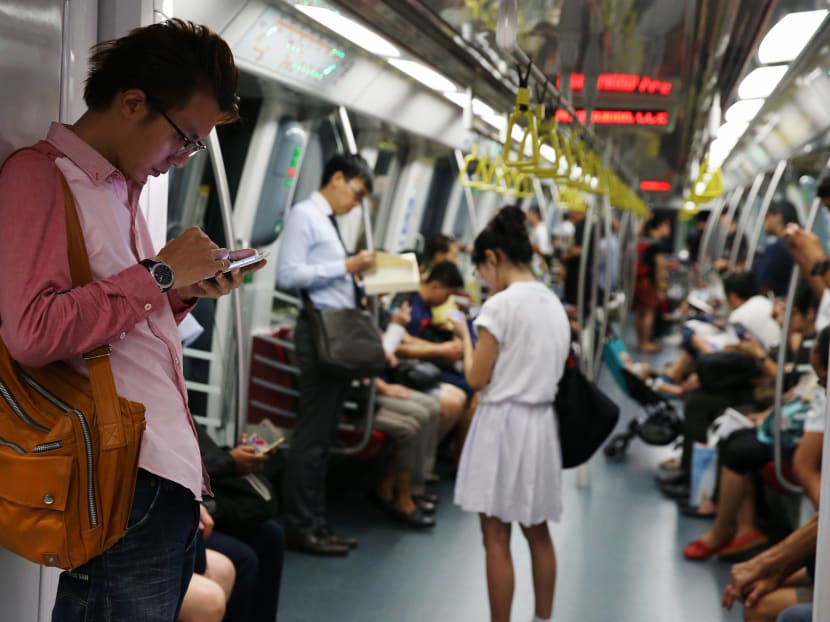Unexpected shutdown of telco services along Circle Line upsets commuters
SINGAPORE — With nary a warning, mobile signals were shut down for at least two hours throughout the entire Circle Line (CCL) on Thursday (Nov 3) night.

A train signal fault on Nov 2, 2016 crippled services during the morning rush hour. Photo: Koh Mui Fong/TODAY
SINGAPORE — With nary a warning, mobile signals were shut down for at least two hours throughout the entire Circle Line (CCL) on Thursday (Nov 3) night.
The unprecedented move, which upset thousands of commuters, was ordered by the Land Transport Authority (LTA) as it tries to flush out the culprit behind the recent signal interferences that caused several disruptions since August.
Commuters fumed, saying an SMS alert could have been sent out moments before the shutdown, even if tests had to run promptly.
A 53-year-old IT professional who wanted to be known only as Ms Tan said: “When my line got cut suddenly, I felt quite helpless. I didn’t know what was happening.”
Ms Lily Toh, 62, a salesperson, added: “They didn’t inform us beforehand, so I thought I was experiencing a billing issue when my line got cut suddenly. I would appreciate it if they could send us a message to inform us before cutting the signal in future.”
Asked about such sentiments, the SMRT and LTA pointed to their statement on Wednesday that said suspensions of mobile signals could be carried out should signal interferences recur, and that announcements would be made in trains and stations.
Ms Tan, however, felt that the announcements were “not clear enough” and she did not know it was related to tests to tackle the train signal faults.
Professor Lim Teng Joon, a wireless-communications expert at the National University of Singapore, said it would have been better if commuters had been given advance notice of the mobile services shutdown.
He suggested that the authorities could have decided against this if the interference was of “malicious intention”, since this would raise the guard of the “attacker”.
If this was so, then “they cannot reveal when they’re going to shutdown the mobile phone signals because, if the attacker knows, he might not launch an attack at that time”, said Prof Lim.
Earlier in the evening, at about 6pm, SMRT warned that commuters could face delays on the CCL “due to intermittent signal interference”. But the operator only said it would deploy drivers to the usually unmanned trains “for safety”, without indicating that mobile signals would be shut down.
But between 8.25pm and 8.46pm, the three telcos, M1, Singtel and StarHub, said in separate social-media posts that they had been instructed to shut down mobile network equipment and services on the CCL.
TODAY understands that intermittent signal interference was detected on the CCL again on Thursday evening, triggering a new round of tests and orders for the suspension of mobile telecommunication signals.
During the shutdown on the 30-station line, which lasted at least two hours from about 8pm, commuters travelling were unable to make calls, send messages, or access the Internet.
The authorities had previously ordered a smaller-scale suspension of mobile signals on Sept 2, in a similar bid to trace the source of the interfering signal, which resulted in train service delays spanning five days. The suspension then lasted two hours and involved only four CCL stations: Kent Ridge, Haw Par Villa, Pasir Panjang and Labrador Park.
They were unsuccessful in tracking down the source of the interference, which resurfaced on Wednesday morning, disrupting service between six stations, including Bishan and Serangoon interchanges. The LTA and SMRT have begun feasibility studies, announced previously, to strengthen the signalling communications network, including exploring modifying the system to provide for redundancy, where the train operator can turn to a backup communication network if the other network suffers from interference. KENNETH CHENG AND CYNTHIA CHOO






